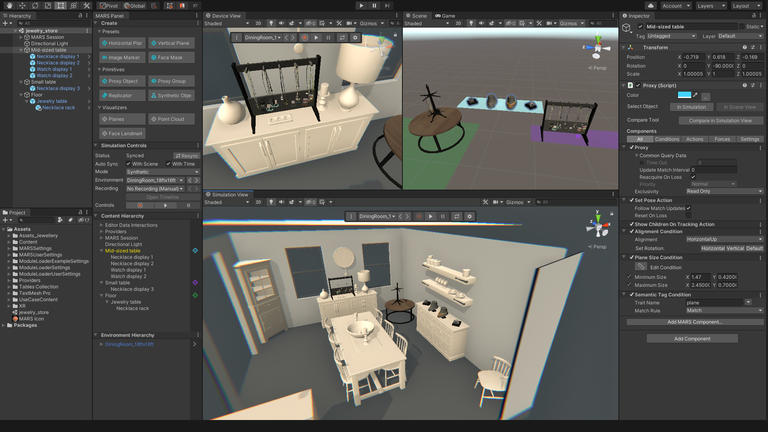Augmented Reality (AR) is a rapidly growing technology that blends virtual objects with the real world. It has numerous applications, including gaming, education, and design. For AR development, there are several game engines that developers can choose from, but the two most popular are Unity and Unreal Engine. In this blog, we will compare Unity vs Unreal Engine for AR development and explore their unique features and benefits.
Unity

Unity is a cross-platform game engine that is widely used for AR development. It supports various platforms, including iOS, Android, Windows, and macOS. Unity has a user-friendly interface, making it easier for developers to get started with AR development. It also has a large community of developers who are constantly creating and sharing resources, such as tutorials, plugins, and assets.
One of the main benefits of Unity for AR development is its support for Vuforia, a popular AR platform that allows developers to create AR experiences for a variety of devices. Unity also offers a wide range of tools for creating 3D models and animations, which is important for creating high-quality AR experiences.
Unity has a simpler and more intuitive interface, making it easier for new developers to get started with AR development. Unreal Engine, on the other hand, has a steeper learning curve but offers more advanced tools and features.
Unreal Engine

Unreal Engine is a powerful game engine that is well-suited for AR development. It has a robust suite of tools for creating high-quality graphics, animations, and physics simulations. Unreal Engine also supports ARKit and ARCore, which are popular AR platforms for iOS and Android devices, respectively.
Unreal Engine is particularly well-suited for AR development because of its ability to create high-quality, photo-realistic graphics. This is especially important for AR applications that require detailed, realistic virtual objects. Unreal Engine also has a large community of developers who are constantly creating and sharing resources, such as tutorials, plugins, and assets.
Unreal Engine is known for its advanced graphics capabilities, including photo-realistic visuals and high-quality animations. Unity also offers good graphics capabilities, but Unreal Engine takes it to a higher level.
Unreal Engine vs Unity for AR (Augmented Reality)
The choice between Unreal Engine and Unity for AR development will depend on the specific needs and goals of the project. Unreal Engine is better for projects that require high-quality, photo-realistic graphics, while Unity is a good choice for developers who are new to AR development or are working on smaller projects.
Why choose Unreal Engine for AR
The Unreal Engine AR framework provides a comprehensive solution for building augmented reality apps for both iOS and Android handheld platforms. It offers a unified code path and a rich set of features including support for basic AR functions such as alignment, light estimation, and tracking, as well as advanced features like augmented faces, images, and environment probes.
The Handheld AR Blueprint template provides a complete example project demonstrating the AR functionality available in Unreal Engine. The supported platforms include iOS and Android, with device compatibility information available on Apple’s iOS Device Compatibility Reference and ARCore Supported Devices Overview.
The Unreal Engine API Reference provides more information on the AR functions, and developers can get started with minimal additional configuration if they are already familiar with Unreal Engine and iOS or Android devices.
Why choose Unity for AR
Unity is a leading software development platform for AR development, offering tools designed specifically for AR creators and a unified workflow across devices.
Unity’s AR Foundation framework allows developers to create an AR app once and deploy it across multiple AR devices, while Unity MARS provides specialized tools for creating AR experiences that interact with the real world.
Additionally, Unity can be used as a library to insert AR capabilities directly into an existing mobile app. The XR Interaction Toolkit adds interactivity to AR apps by making it simple to add components to the scene.
I’m not sure if I’m understanding this correctly, but Unity and Unreal Engine are both used for creating Augmented Reality applications? Is that right? If so, which one would you recommend for someone just starting out?